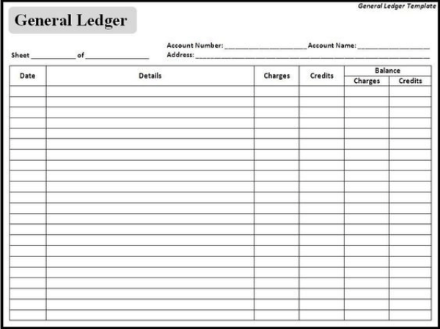Advantages and Disadvantages of AccountingAccounting is simply a business language used to let organizations, people, governments, etc., know about financial and other information about aspects of business and non-business enterprises. The system of accounting has been followed from ancient times to modern times. 
Accounting, in simple terms, is all about communicating the results of an organization's operations. This whole accounting system is designed to turn the input (financial transactions) into output (financial statements). Usually, groups of various people who need and use accounting information are divided into two categories:
The accounting system is based on the following basic accounting concepts and conventions. It is based on conceptual frameworks. It provides a framework for setting standards for accounting, dispute settlement in accounting, and fundamental principles of different natures. It consists of three levels, i.e., level 1, level 2, and level 3. There are many branches of accounting based on the information and area of their application. These systems have their fixed format. There are about ten types of accounting which are as follows: 
1. Financial Accounting:This accounting is designed for information related to business transactions; periodic income statements, balance sheets, and cash-flow statements. This accounting type helps determine the profit-loss incurred during the accounting period and the financial position at the end of the accounting period. 2. Cost Accounting:This account records the cost incurred for business activities and helps manage cost control. 3. Management Accounting:This accounting help in future planning, decision-making, control, etc., by providing the interpretation of accounting information. Internal users usually use this to form policies and ensure the proper functioning of the business. 4. Social Accounting:Also known as social reporting or social responsibility accounting. This accounting system keeps records of social welfare and the cost associated with performing them. Examples include medical, provident funds, canteen, housing, etc. This may also include the overtime done by an employee but no payment, unreasonable termination of an employee's service, environmental pollution, etc. 5. Tax Accounting:This accounting deals with various tax obligations such as income tax, sales tax, customs duties, etc. This was designed to tackle difficult taxes by keeping a record for easy identification and evaluation. 6. National Accounting:This branch of accounting keeps a record of the nation's resources as a whole and is not related to any particular entity. This is developed and used by statisticians and economists. 7. Human Resources Accounting:This accounts for the company's people and keeps the human resources record in terms of money. This also helps identify the non-human assets of the firm. This system does not have any fixed format for universal usage. 8. Green Accounting:This branch of accounting takes the environmental costs into account for the calculation of the operating cost of the enterprise. 9. Forensic Accounting:This accounting system is all about keeping a record of the minute details of the relationship and application of the system used in recording transactions & summarizing business statements. This system is the integration of accounting, auditing, and investing skills. 10. Creative Accounting:This branch is about manipulating operating results and the business's financial position within the limits of accounting principles. There are two bases of accounting followed in keeping and recording the accounts books: 1. Cash Basis of Accounting:Under this system, only the transactions done through cash are considered for calculating the income, and even credit transactions are ignored. This is useful for professionals like doctors, brokers, traders, engineers, etc. Features:
The major drawback is that the Companies Act does not recognize this system. Also, there is no consistency, as capital and revenue are treated as same. 2. Accrual Basis of Accounting:This basis of accounting ignores capital expenditure, and revenue items are considered for the calculation of the income. Here revenue is recognized when earned and received. The same goes for expenses, recorded when incurred and not when paid. Revenues and income are taken into account based on the accounting period. Features:
Being in use for quite a long time, the system of accounting has two parts primarily: 1. Single Entry System:This system does not work on a dual aspect of accounting, and in Kohler, it is defined as a bookkeeping system with maintained cash and personal accounts. 2. Double Entry System:This system includes a recording of account details based on proper and systematic recording; also, the two-fold effect is talked about here in this system. Business Transactions in this system are recorded in two ways:
There is also a combination of both systems of entry in accounting which is known as the Indian System. This is an indigenous system of record keeping followed all over the country and is popularly known as the "Deshi" accounting system. This system does not have any prescribed format for recording entries, but this system also has a drawing of the trial balance and balance sheet in the procedure. At present, this system also has rules and procedures as a double entry system involved. Advantages of Accounting
Mostly the uses of accounting incorporate its advantages, and there are no such differences in identification. 1. Prepare for Financial Statements: The system of accounting is used in keeping systematic records of transactions in the business. This, in return, makes it easy to draw out financial statements of the income, which gives information about the profits and losses incurred by the business for a particular accounting period and the balance sheet. which gives an idea about the position of the business in terms of assets, liabilities, capital, etc. 2. Comparison of the Results: This proper and systematic arrangement of the transaction and calculation of profit or loss helps compare the business's growth by comparing yearly performances between two firms. The concept is known as intra-firm and inter-firm comparison, respectively. 3. A Legal Document: These records can be produced for any legal cause as they serve as documentary evidence in a court of law in case of any transaction dispute. 4. Maintenance of Records: The system helps in proper and systematic record maintenance in various books. It becomes easy to compute the high number of transactions, which is impossible just by memorizing those transactions. The transactions usually are complex, and the human brain can retain information that is very large in nature. 5. Future Plans and Management: Accounting helps get data about the business, like profit, cost, loss, and financial positions of assets, liability, capital, etc., so ultimately, this helps carve a better future strategy to grow. The management gets information about different department's expenses, which helps manage cost control. This helps in the defensive framework development of the business for the future. 6. Loan Raising: By looking at the accounts of a business, creditors lend loans to any business, so it is of great help. 7. Taxation: The accounts record help in matters related to taxation as they can be used to convince tax authorities when talking in for income tax and value-added tax. 8. Value of the Business: Accounting helps assess the business's proper price and is helpful while selling the entity. The account books give details about all tangible and intangible assets, liabilities, and everything that can be valued. This turns advantageous when there is any dissolution or selling of the entity takes place. 9. Control on Property: With the help of records of the accounts, all the properties or assets can be easily managed as these contain details like assets, cash in hand, cash, bank account, etc., are some pieces of information that are recorded. 10. Prevention from Errors and Frauds: The details and records of the accounting book of any business entity are audited every time, so there is every chance of detection of any errors, and later major steps can be taken to prevent any such instance from happening in the future. Disadvantages of AccountingThe accounting system has no disadvantages because of its systematic nature, but it has some limitations. These are: 1. Possibility of Window Dressing: Practices of manipulating the financial positions of the business, like mentioning debtors, and no provisions are made for bad debts. This makes balance sheets lack fair and true information about financial positions. This will have consequences as a fake bubble of information will create a hollow foundation that further devastates the business in the long term. 2. Unbiased Accounting Information: Income is the function of excess revenue over expenses in the books of accounts. This information does not include the environmental cost, accidental injuries of employees, etc. 3. Mere Historical Records: The records of books of accounts are of past transactions and do not contain any benefits which could be ripened in the present or future. These only include historical details. 4. Bound to Periodicity: The foundation of record keeping in the books of accounts of a business is bound to many principles of accounting for recording transactions related to business. These are to be maintained throughout the year and for years. If not done, the financial information or the accounting records may become inconsistent and become worthless as they would not provide any valuable information about the business's financial position, growth rate, etc. 5. Personal Estimates: The use of estimations in the accounting system often prevents the exact interpretation of information. Some examples are the estimation made for the useful life of an asset, the use of different methods of calculation of depreciation of a good, etc. Since the decisions are based on the comprehension level of accountants, they may lead to distinct observations. 6. Present Value of Business: The cost concept is used in accounting to record assets. So original cost is recorded for the new asset, and for old assets, book value is used as the basis for recording in the books of accounts. (The book value is calculated by subtracting depreciation from the original cost). So, the present market value is not considered. Thus, the effect of inflation and deflation is ignored. Ultimately, the financial position shown by the balance sheet is not true. 7. Unrealistic Pieces of Information: Although the financial statements are prepared strictly following the basic accounting principles and conventions, still they can be incorrect and unrealistic. The going concern concept advocates for the indefinite life of a business entity, and thus assets are recorded at cost or book value. Still, the market value is lower, which is self-contradictory. 8. Record of Material Items Only: The system only accounts for the significant materialistic item, and the insignificant unmaterialistic items are ignored, which are important. An example is a goodwill. 9. Non-Monetary Transactions: In the financial accounting branch of accounting, records of monetary transactions and non-monetary transactions are not recorded. (Monetary transactions are transactions that can be measured in terms of money, and non-monetary transactions are transactions that cannot be expressed in terms of money). The insignificance of non-monetary transactions in the record books of account turns out to be very important for business enterprises, such as the health of the working sales associates and laborers, the day and night hard work of the authorities in managing the business, etc. Accounting does not give a clear picture of information about all the events of a business. 10. No Estimation of Managerial Efficiency: The accounting system does not give any information about the managerial works involved in a business entity in terms of increased or decreased profit/loss margin. There is always scope for adjustment or omitting of profit or income in expenses like advertisement expenses, expenses for depreciation, the cost for research and development, and so on.
Next TopicAdvantages and Disadvantages of Audit
|
 For Videos Join Our Youtube Channel: Join Now
For Videos Join Our Youtube Channel: Join Now
Feedback
- Send your Feedback to [email protected]
Help Others, Please Share










